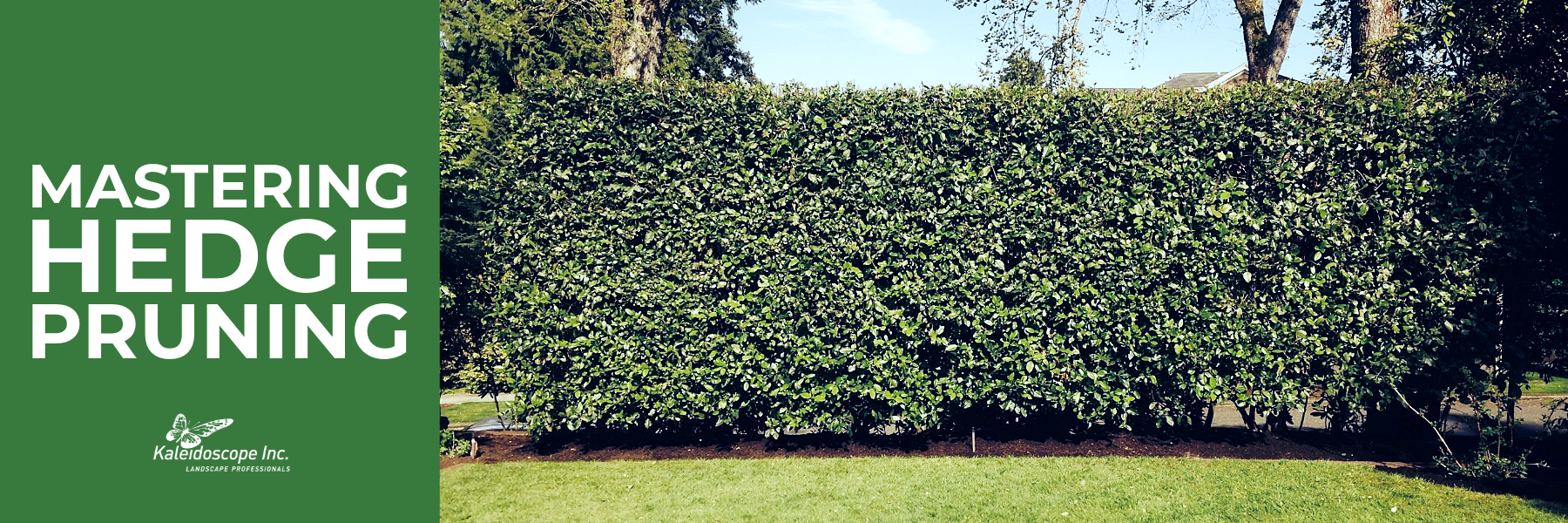Mastering the Art of Hedge Pruning
Mastering the Art of Hedge Pruning: Tips for a Healthy and Beautiful Landscape
Hedge pruning is more than just trimming a few branches; it's an essential garden practice that shapes your landscape, promotes healthy growth, and keeps your hedges looking their best. Whether you have a formal garden with neatly clipped boxwoods or a more naturalistic setting with flowing evergreen hedges, proper pruning techniques can make all the difference. In this blog, we’ll explore the best practices for hedge pruning, so your garden remains lush and well-maintained year-round.
Why Proper Hedge Pruning Matters
Hedges serve many purposes in a garden: they can define boundaries, create privacy, serve as windbreaks, or simply add aesthetic appeal. But without proper pruning, hedges can become overgrown, lose their shape, or even suffer from poor health due to overcrowded branches and lack of light.
Proper pruning:
Encourages Healthy Growth: Pruning removes dead or diseased branches, allowing new, healthy growth to flourish.
Shapes the Hedge: Regular trimming helps maintain the desired shape and size of your hedge, whether you prefer a formal, geometric look or a more natural form.
Improves Airflow and Light: Thinning out dense hedges allows better air circulation and light penetration, which can prevent diseases and promote overall plant health.
When to Prune Your Hedges
Timing is crucial when it comes to hedge pruning. Pruning at the wrong time can stress the plants or lead to poor regrowth. Here’s a general guide to help you plan:
Evergreen Hedges: Prune evergreen hedges, such as boxwood or yew, in late spring or early summer, after the new growth has emerged. A light trim in late summer can also help maintain their shape.
Deciduous Hedges: For deciduous hedges, like beech or hornbeam, prune in late winter or early spring before new leaves appear. This allows you to shape the hedge without interfering with its growing season.
Flowering Hedges: Prune flowering hedges, like spirea or lilac, immediately after they bloom. This ensures you don’t cut off next year’s flower buds.
Regular Maintenance: For formal hedges, frequent light pruning throughout the growing season is recommended to keep the shape tight and tidy. Informal hedges may only need one or two trims per year.
Essential Tools for Hedge Pruning
Having the right tools makes all the difference in achieving clean cuts and a polished finish. Here are some essential tools you’ll need:
Hedge Shears: Ideal for trimming small to medium-sized hedges, hedge shears are great for precision work and shaping.
Pruning Loppers: For thicker branches, loppers provide the leverage needed to make clean cuts without damaging the plant.
Hand Pruners: These are perfect for detailed work, like cutting smaller branches or tidying up after using larger tools.
Electric or Gas Hedge Trimmers: For large hedges, powered trimmers can save time and energy. However, be cautious with these tools, as they can easily cut too much if not handled carefully.
Pruning Techniques for a Perfect Hedge
Start from the Bottom Up: Begin pruning at the base of the hedge and work your way up. This ensures that you maintain a consistent shape and allows the hedge to receive even sunlight from top to bottom.
Keep the Hedge Tapered: To prevent the base of the hedge from becoming too shaded, trim the sides so that the hedge is slightly narrower at the top than at the bottom. This shape allows light to reach the lower branches and promotes uniform growth.
Step Back and Assess: Periodically step back from the hedge to check your work. This helps you see the overall shape and make adjustments as needed.
Thin Out Dense Hedges: If your hedge is very dense, consider thinning it out by removing some of the interior branches. This improves air circulation and reduces the risk of disease.
Common Hedge Pruning Mistakes to Avoid
Over-Pruning: Removing too much foliage at once can stress the plant and lead to poor regrowth. It’s better to prune lightly and more often than to make drastic cuts.
Ignoring Seasonal Timing: Pruning at the wrong time can lead to a loss of blooms or encourage growth at the wrong time of year, leaving the hedge vulnerable to frost damage.
Using Dull Tools: Dull blades can tear branches rather than making clean cuts, which can harm the plant and lead to disease. Always keep your tools sharp and clean.
Conclusion
Proper hedge pruning is an art that combines technique, timing, and a bit of creativity. By following these tips and techniques, you’ll be able to maintain healthy, beautiful hedges that enhance your garden’s overall appearance. Whether you’re aiming for a formal, manicured look or a more natural, flowing design, regular pruning is key to keeping your hedges in top shape. Happy pruning!

